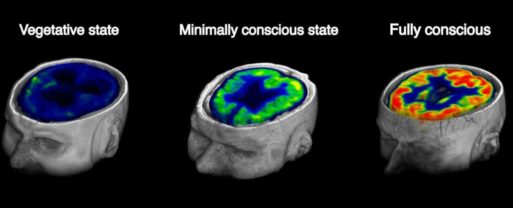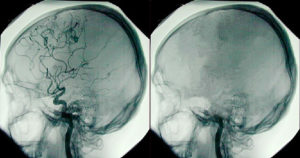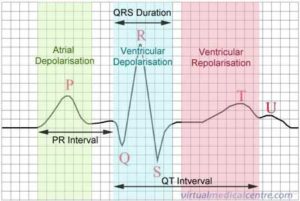There are many ways that the body — or parts of the body — can die. Some are caused by illness or injury, and others are just natural ways in which the body develops and changes over time. Additionally, changes in organ function may lead to altered levels of consciousness. Some of these are reversible, while others lead to death.
Cellular death. The body consists of billions of microscopic units caused cells. Sometimes cells die as a result of an illness or injury. A heart attack, for instance, blocks oxygenated blood from reaching the cells of the heart. Depending on where the damage is located and how severe the damage is, the death of these cells can cause the heart to stop functioning and the body to die.
There is another type of cell death that is benign and even healthy. One example of this type of cell death is when dead skin cells slough off leaving new, healthier cells in their place. The average adult loses 50 to 70 billion cells per day.

Credit: sciencealert.com
Coma. A coma is a prolonged state of unconsciousness. It is caused by internal or external damage to the brain. Internal causes include swelling, stroke, and blood glucose levels that are too high or too low. Sometimes doctors will articifically induce a coma to give an ill or injured person’s brain a chance to rest and recover.
The prognosis for a person suffering from a coma depends on several things. The first is the cause of the coma. For instance, a coma due to low blood sugar can usually be treated by injecting glucose, whereas someone with an inoperable brain tumor may die without waking up.
Persistent vegetative state. A persistent vegetative state is a lack of responsiveness due to an illness or injury of the brain. The brain is not dead because the brainstem, the part of the brain that controls basic life functions, survives. Thus the person may roll his or her eyes and pull away from painful sensations, but he or she lacks self-awareness and awareness of others. People are diagnosed as being in a persistent vegetative state if they continue to show a lack of responsiveness for a month or more. Most people in a persistent vegetative state will die within six months, usually from an infection like pneumonia. Some families may elect to stop medical interventions such as liquids and feeding when it becomes clear that the person will not recover.

A perfusion scan shows a normal brain (right) versus a brain that has died.
(Credit: donorrecovery.org)
Brain death. Brain death is different from persistent vegetative state because the entire brain, including the brainstem, is dead. A person who is considered brain dead is considered legally dead, even if his or her heartbeat and breathing are maintained through artificial devices. One of the most common causes of brain death is anoxic damage, caused when oxygen can’t reach the brain.
There are several tests doctors use to determine if brain death has occurred. One is to screen for drugs and alcohol that can cause symptoms similar to brain death. When these causes are ruled out, doctors check for basic reflexes such as eye movement in response to light and gagging when the back of the throat is touched. Finally doctors run a perfusion scan to see if any blood is circulating in the brain and an electroencephalogram to look for electrical activity in the brain. If neither circulation or electrical activity is present, brain death is confirmed.
Depending on age and health status at the time of death, the person who is brain dead may become an organ donor if the family agrees. Up to 25 different organs and tissues can be donated including the heart, lungs, liver, kidneys, corneas, and skin tissue. In that case, life support is continued until the organs are removed. Otherwise, doctors will typically discontinue life support within a few hours of certifying brain death.

An electrocardiogram maps the electrical activity of the heart.
(Credit: myvmc.com)
Cardiac death. Sudden cardiac death occurs when a person’s heart stops beating (cardiac arrest). Caused by the disruption of the electrical activity of the heart, it is the single largest cause of natural death in the United States, according to WebMD. Unlike brain death, which is irreversible, cardiac death may be reversed with cardiopulmonary resuscitation and automated electronic defibrillators. Cardiac death must be treated quickly because severe damage to the brain can occur in as little as four to six minutes. A person who experiences cardiac death and cannot be revived is not eligible to donate his or her heart or lungs, although they may be able to donate kidneys and other tissues if circulation is maintained.
Because sudden catastrophic accidents and illness can happen to anyone at any time, it’s important that you talk to your loved ones and tell them what kind of care you would want if you were in a coma or vegetative state. Additionally, document your wishes clearly in an Advance Healthcare Directive, so your loved ones don’t have to struggle to figure out what you would have wanted when you can’t speak for yourself. If you would like to be an organ donor, you may register through the Motor Vehicle Department in many states. Alternatively, you may sign up online at Donate Life.net.

 Types of Death and Altered Levels of Consciousness
Types of Death and Altered Levels of Consciousness


 Our Monthly Tip: Make an “In Case of Death” File to Ease Loved One’s Grief
Our Monthly Tip: Make an “In Case of Death” File to Ease Loved One’s Grief
















